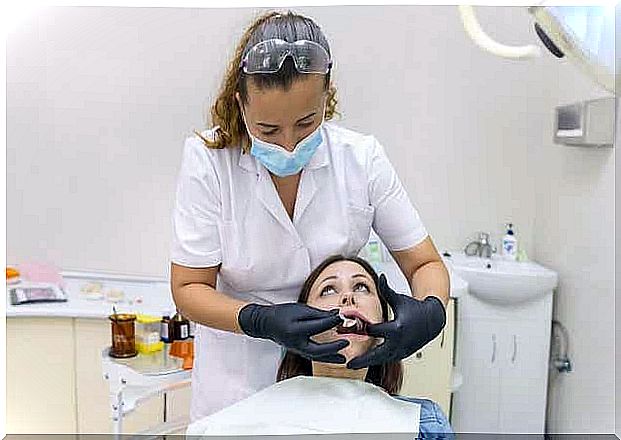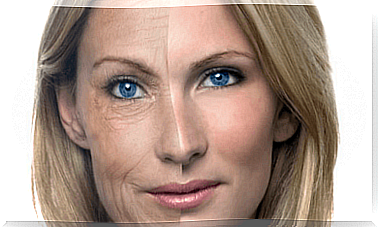What Is A Smile And How Is It Treated?

A smile is a healthy act – a sign of joy and connection with other people. But for some people, a gingival smile can adversely affect this gesture.
It is an ailment in which a person’s smile reveals more gum tissue than normal. People who suffer from it think that their gums are too big, that their teeth are too small, or that their lips move too much as they laugh.
Below we tell you what a gingival smile is all about and why it comes from. We also tell you how to treat a gingival smile.
What is considered a glamor?
A gingival smile is a discomfort in which the gingival tissue is visible too much above the teeth when smiling. What it looks like is unique and depends on the features of a person’s face. In general, however, a gingival is when more than 3 to 4 mm of gums appear when smiling.
This mismatch between the teeth and gums can make the gums look very large or the teeth and lips very small. While it is not a health problem, it is an aesthetic disadvantage that can adversely affect the well-being of those who suffer from it.

What causes a gingival smile?
The cause of a tooth smile can be in the teeth, bones or muscles. It can also be due to biting or bone pathologies. Below we tell you more about its most common causes.
Excessive gingival tissue
There is more gingival tissue here. The gums look long, and the teeth, although normal in size, look small due to the mismatch between the two tissues.
Some patients experience increased idiopathic growth of gingival tissue (i.e., the cause is unknown). On the other hand, gingival enlargement may also be due to gingivitis, or gingivitis, and the use of some medications.
Gingival hyperplasia can also be caused by anticonvulsants, antihypertensives, or immune suppressants. The gums grow too much around the teeth and require treatment because they can completely cover the teeth and cause periodontal problems.
Short or more mobile lip than normal
If the lip is smaller than normal, it will not reach to cover the gums when the person smiles. In the case of hypertonic or hyperactive lips, which are more mobile than normal, they stretch and rise too high when smiling, as a result of which they reveal too much gingival tissue.
Differences in tooth growth
Sometimes a smile is due to the way permanent teeth appear. In these cases, there are usually hereditary factors associated with the problem.
Sometimes the gums cover the surface of the tooth more than normal when the teeth erupt, leaving part of the dental crown covered in the gums. This gives birth to a smile.
Excessive extrusion of a tooth usually occurs when a tooth seeks contact with an opposing tooth, i.e., an upper or lower opposite tooth that is lowered due to excessive wear or no longer due to tooth extraction. Ien follows this tooth movement by thickening and appearing with a smile.
Bite problems
When the upper teeth cover the lower teeth almost completely when the teeth are bitten together, there is talk of overbite. In these cases, a gingival smile may occur, as the length of the teeth and upper gums is below the normal limit and they appear when you smile.
An open bite can also be the cause of a smile. When the height at the front increases and the bite is not normal, the lips do not cover the gums, leaving them bare.
Skeletal causes
As the upper jaw grows larger than normal, a condition called vertical jaw hyperplasia occurs. The gums and upper teeth then remain lower relative to the rest of the face, making the gums more visible when smiling.
Treatment options for a gingival smile
There are several options for treating this ailment and beautifying a person’s smile. The choice of treatment depends on the causes of the discomfort.
Here are some options to fix this aesthetic problem.
Gum surgery
Gingivectomy is an operation on the area of the mouth where excess tissue is removed from the gums. It is a simple procedure performed under local anesthesia performed by a dentist who specializes in connective tissue diseases at the reception.
The edges of the gums are cut with a scalpel or laser, removing excess tissue. This leaves more surface on the teeth. The bone may also need to be cut.
The gums may bleed and may be sore after surgery. However, recovery is quick and no scars remain.
Changing the position of the lips
When the gingival smile is caused by the lips, the position of the lips may need to be changed with surgery. In this operation, part of the connective tissue is removed from the lower part of the upper lip, which prevents the muscles involved in laughing from lifting the upper lip too high.
This, too, is done under local anesthesia. To remove connective tissue, incisions are made in the lip, which are then sutured closed. Recovery is usually rapid and the results are permanent, although sometimes the affliction may recur.
Orthognic surgery
Orthognic surgery is utilized in cases where the gingival smile is due to bone growth. With jaw surgery, the height of the jaws can be balanced.
In these cases, treatment requires a multidisciplinary approach, it requires a lot of advance planning, and it is combined with orthodontic treatment. The change in the patient’s face is very noticeable.
The procedure is performed in the operating room under anesthesia. The surgeon cuts part of the upper or lower jaw and then reattaches the ends with plates or screws.
Staying in the hospital takes several days and the recovery process is slow. The chin is held in place with rubber bands and instruments during recovery. Treatment is supplemented by orthodontics. The process is slow and takes several years.
Orthodontics
With the help of fixed or removable dental instruments, for example, oblique teeth can be brought into the correct position.
It is also useful for bite problems such as open bite and overbite, which cause a smile.

Botulinum toxin injections
Botulinum toxin injections (botox) can be a solution in cases where too much gums are visible due to excessive lip lift when smiling.
The injections are placed at the base of the nose. This paralyzes the muscles that lift the lips, so they don’t have as much power to lift the lips completely when a person smiles.
The disadvantage of treatment is that it has to be renewed every 3-4 months to maintain efficacy. And if the substance is injected too much, the smile becomes distorted.
Hyaluronic acid
Hyaluronic acid helps with a gingival smile caused by over-moving lips. In this treatment , fillers are injected into the lip, which restricts the movement of muscle fibers.
The effect can last up to eight months. Although the amounts injected are usually small and the sequelae due to use are rare, it is important to be aware of the side effects of the substance in question.
Don’t embarrass the smile
A gingival smile is not usually caused by an oral health problem, but it can be a distracting affliction for those who suffer from it. Complexes, shame, and covering your mouth with your hand while laughing are common habits in these people.
There are many treatment options, so visiting a dental professional is the first step to solving the problem.
A smile should not be bothersome to anyone. If a gingival smile prevents a released smile, help should be sought from a professional.









